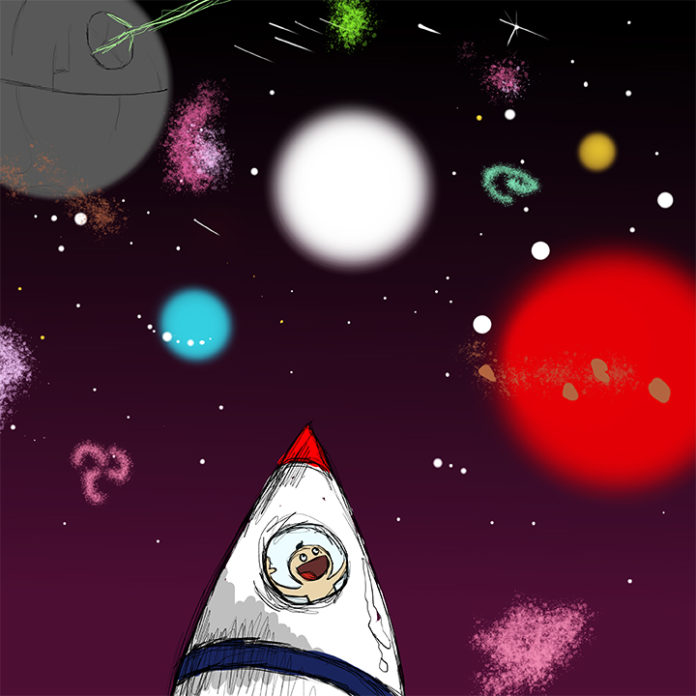Following World War II, conflicts between the Soviet Union and the United States spurred the Cold War. Tensions between the countries remained strained during this period and the two powers turned their attention to the skies, beginning the race for space and technological superiority.
From 1961 to 1964, NASA’s budget increased by nearly 500 percent and the organization employed 34,000 people, as well as used 375,000 industrial and contracting employees, according to the History Channel. The space race concluded with the successful landing of the Apollo 11 spacecraft, and Neil Armstrong’s famous first walk on the moon.
During this time, the public was attuned to NASA’s work and developments made by both the U.S. and Soviet Union were given priority in the national media. This was stimulated by the new use of television and portrayed astronauts as American heroes — a job to be revered by others.
Post space race triumph, both the public and the government’s interest began to dwindle. Funding has been gradually cut from the NASA program since then, and a Plan for Potential Government Shutdown was created and listed as “Due to Lapse of Funding,” in September of 2015.
President Donald Trump’s campaign has since made threats to NASA and space exploration, which clearly validated private companies to take over space exploration. This would conflict with the work that NASA is currently doing, including work on the international space station, which was founded by the United States and to which they are committed until 2024.
NASA has recently discovered seven habitable planets around a nearby star (40 light-years from Earth). This is the largest-ever number of hospitable-zone planets found around a single star outside of the Milky Way. NASA’s continued research has led to a discovery that greatly impacts us here on Earth.
By being able to look at the environments of planets that have yet to be altered by humans, scientists have a chance to better understand the planet we live on. It is also another step toward finding life outside of our planet — or the “are we alone,” question, Thomas Zurbuchen, associate administrator of the agency’s Science Mission Directorate in Washington, said.
These planets were discovered by the Spitzer Space Telescope, which has been launched for nearly 5,000 days, according to the satellite’s mission site. The technology that made the telescope possible began in 1983 with the first sky survey with thermal infrared wavelengths. The NASA Jet Propulsion Laboratory site predicts that this began a new era of astronomical exploration. A number of other space-based experiments made their way into the sky over the years, but the Spitzer has observed farther and with greater depth than any other scientific item before.
The discovery of these planets was celebrated by the science world, and was given a media presence for a short time in the public’s eye.
Discoveries like these are not to be pushed aside. Each time a star is discovered or a new technology is created, scientists work to better understand the world we live in, as well as put our miniscule planet into perspective.
The sheer amount of time and brain power put into the smallest astronomical discovery is overwhelming. The camera equipment that has been developed, the mathematics and astronomical knowledge that had to be applied to engineering and the technicalities involved in space travel all come together into one marvelous creation.
The overwhelming lack of interest and funding for NASA and of similar entities is not acceptable. Both the government and public must begin to realize that without the continued study of space, the understanding of the Earth we live on is placed on hold.
Begin to take part. The simplest actions show a change in the attitude of space exploration. Look at space imaging, whether on an Instagram account or a website dedicated to the art. Write to your local representatives and let them know that space is something that needs to matter to all. Change is not made in a day, but neither is the discovery of the planets.






